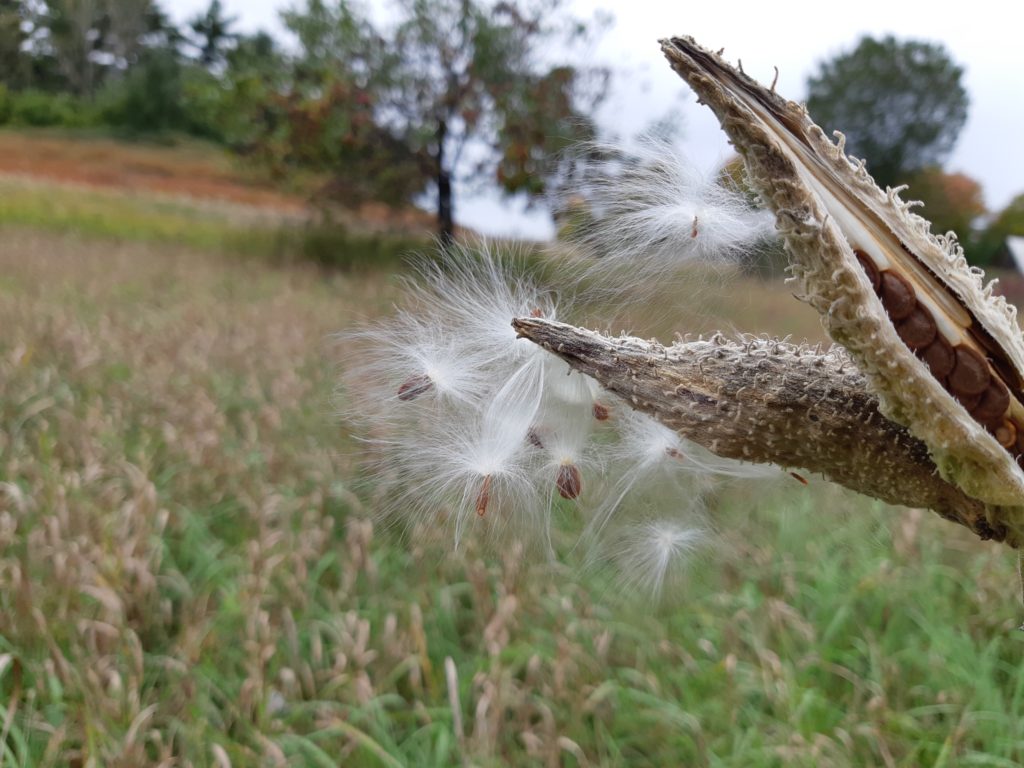
Late October is a good time to help nature along and plant some milkweed seeds. Milkweed, Asclepias spp., are the sole food sources for Monarch caterpillars, a species COSEWIC (Committee on the Status of Endangered Wildlife in Canada) assessed as Endangered in 2016. They also have beautiful, fragrant blooms that provide nectar for butterflies and many other insects. And the seed pods, full of seeds on silky parachute threads, make for lots of outdoor fall fun for the young-at-heart.
Monarch butterflies are a treat to see. They are beautiful, their chrysalises are prettier than any jewel, and their migration is awe-inspiring. I want future generations to know their beauty too…in abundance…in the wild. COSEWIC cites wintering habitat loss and degradation from agriculture, logging, fire and forest thinning, along with the predicted decline in suitable overwintering habitat and increase of winter storm frequency due to climate change, as the main threats for Monarchs wintering in Mexico. For the Californian overwintering sites, habitat degradation due to real estate development is listed as the main threat. Throughout the Monarchs’ range, the increase of herbicides and thus decline of milkweed and other nectaring plants is considered a threat, along with the use of neonicotinoid pesticides.
The Common Milkweed, Asclepias syriaca, is probably the species most familiar, but there are 14 species of milkweed native to Ontario. Common Milkweed grows in meadows, in ditches, and along trails, roads and forest edges. Milkweeds are perennials, but they may not bloom their first year as they put energy into their root system. When they do bloom, they are beautiful and smell wonderful!
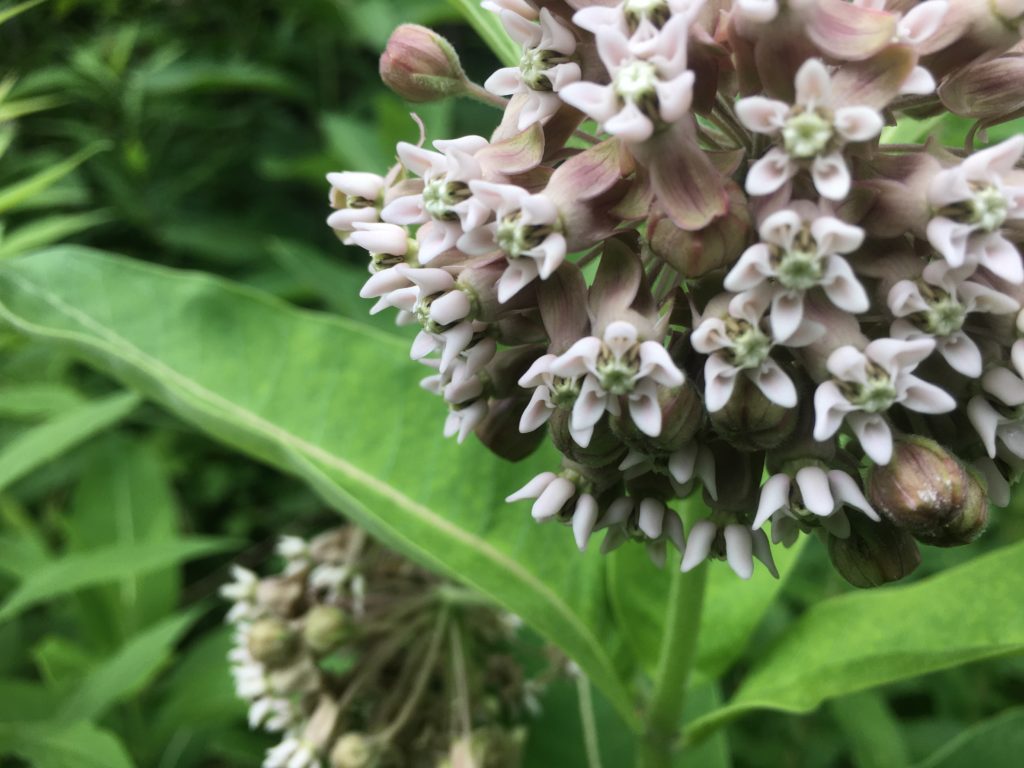
The seeds need to be cold stratified to break their dormancy. So, it is easiest to mimic nature and plant the seeds in fall when they would naturally disperse, allowing winter to do the work. In our area, by late October many of the pods have lost their green colour, turning brownish-grey, have split and are dispersing their seeds on the winds.
We collected some Common Milkweed pods, and planted a bunch of seeds in a sunny spot about an inch deep just before some rain was forecasted.
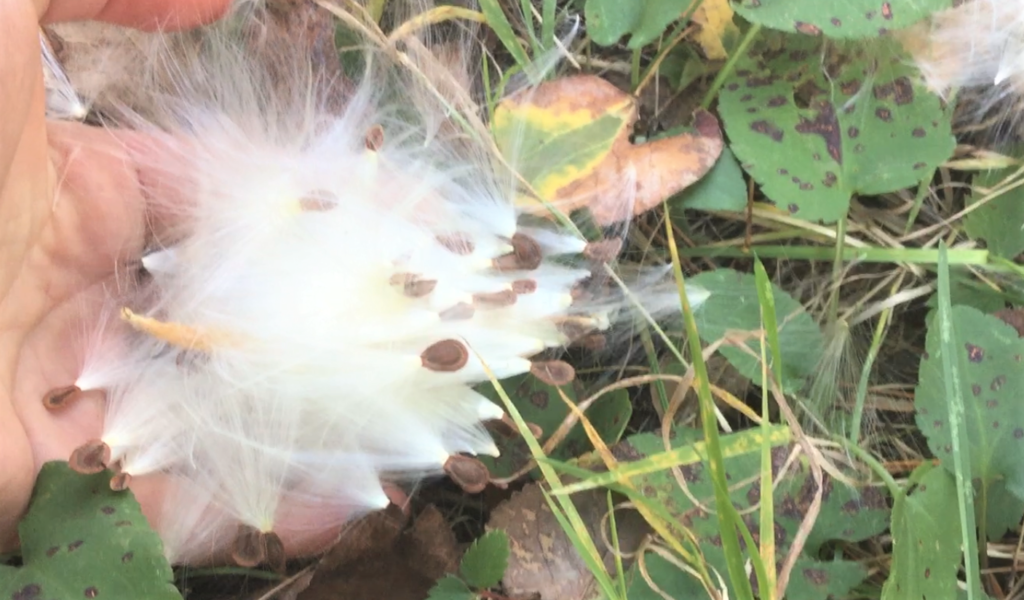
Fingers crossed, we get some growing in the spring. I really hope so because I miss seeing and smelling them. The farmhouse we used to rent had this beautiful view:
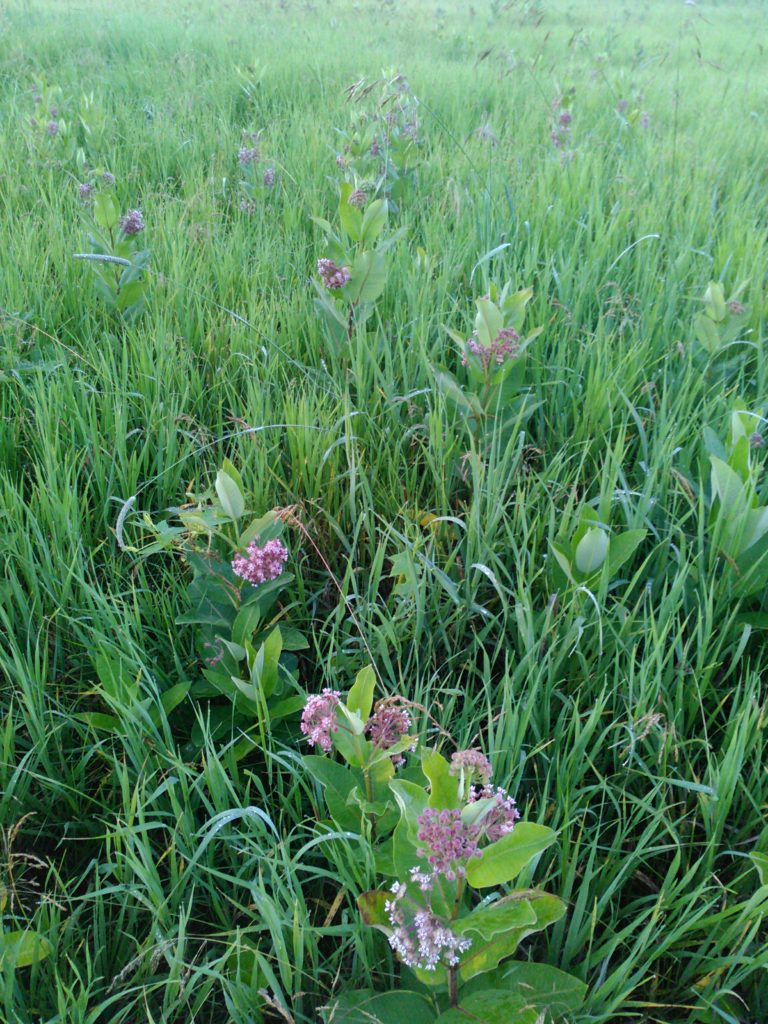
On other occasions, we just have fun helping them spread on the wind.
My daughter also uses the pods as loose parts for her fairy and dinosaur worlds, in her mud kitchen, which she calls the Tea Shop, and as little boats to float in water.
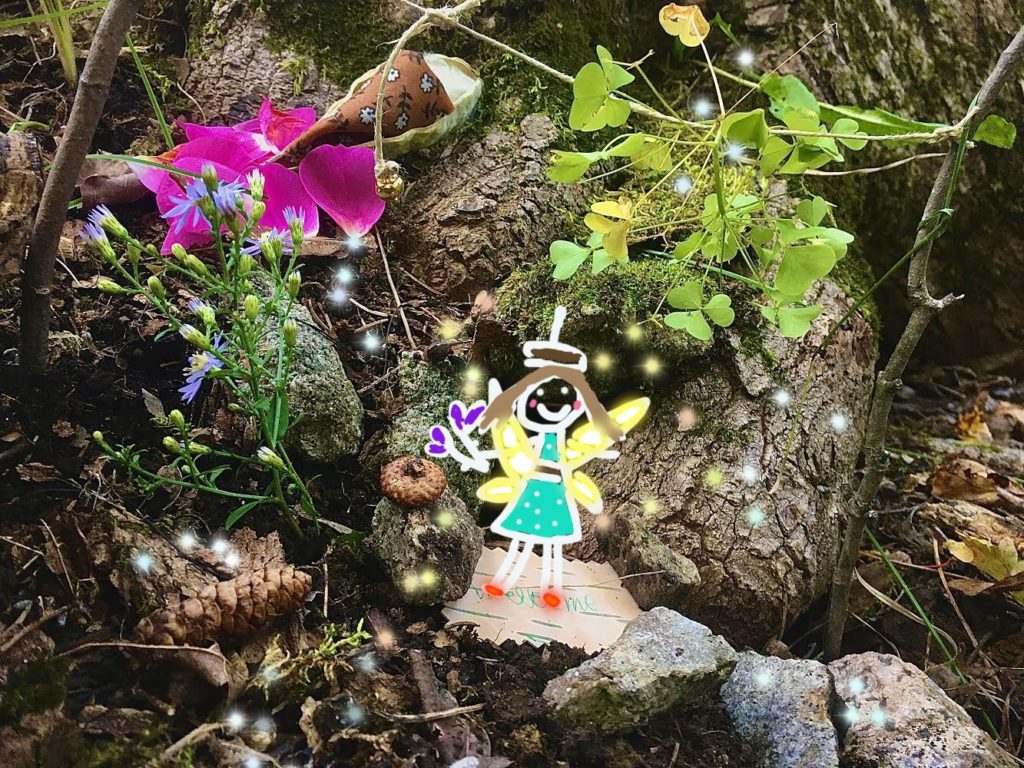
Because we are homeschooling, we kept exploring and learning about the plant. We used the seed pods for a estimation, data collection, counting, and basic statistics lesson. We did a similar inquiry-based data collection with Forget-Me-Not flowers in spring.
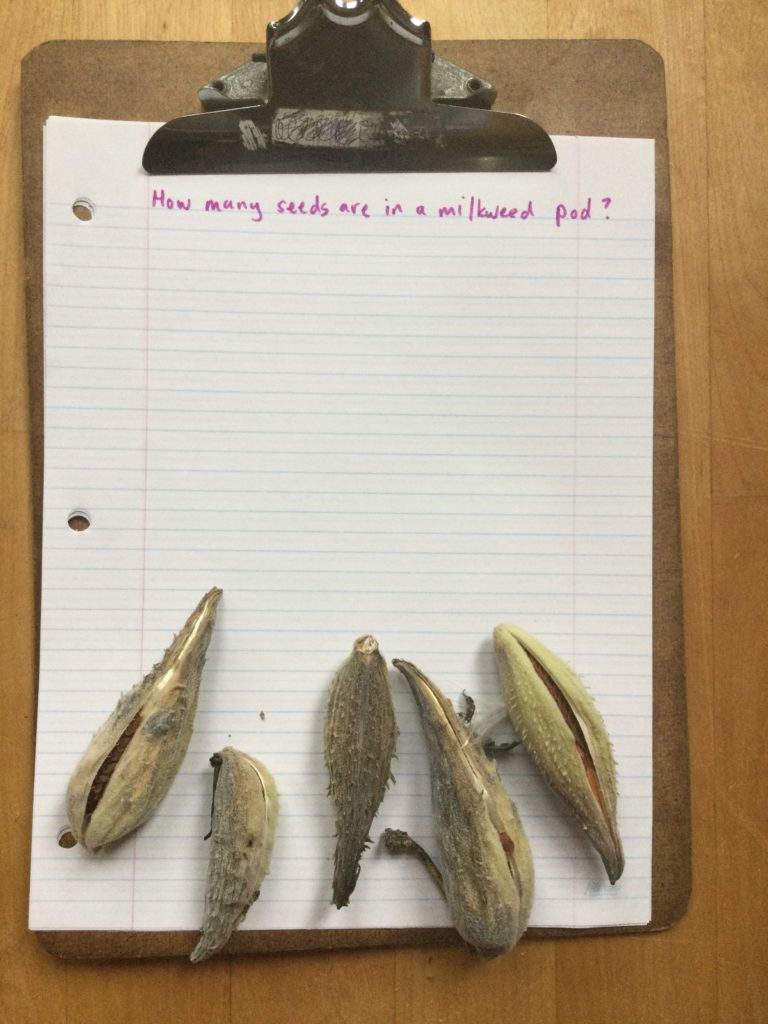
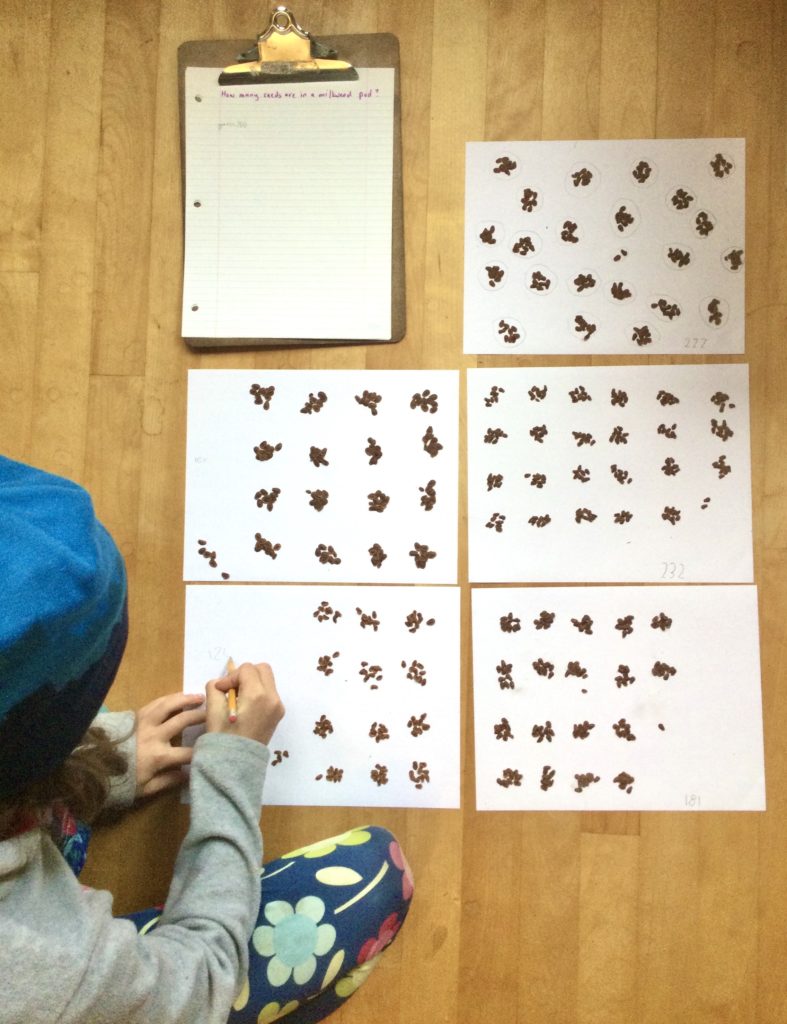

We read that the silks are hollow and coated in wax, making them extremely buoyant, waterproof and good insulators. So, we experimented and tried floating some rocks with the silk. They really are buoyant and waterproof! We learned that for a time, the silks were used in life vests (kapok fibers were normally used in the past and synthetic fibers are used now), and there are companies that are currently using the silks in products as insulation (apparently it clumps after being washed so some companies blend it with goose down).
The milkweed silks also make good flash tinder and we use it for fire starting practice with flint and steel.
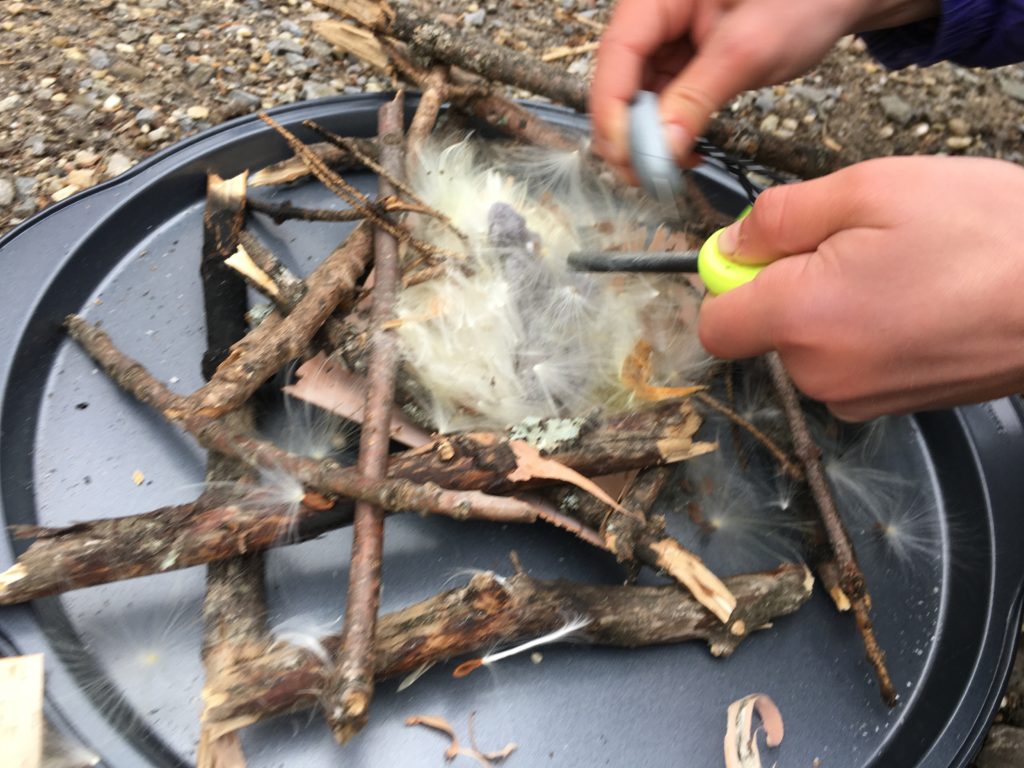
Lastly, here are some nice books about Monarchs (click on the titles below to go the to the write-ups):


- Monarch Butterflies: Explore the Life Journey of One of the Winged Wonders of the World
- Winged Wonders. Solving the Monarch Migration Mystery
- The Life Cycle of a Butterfly
- Monarch Butterfly of Aster Way
- Migration. Incredible Animal Journeys
A few more notes:
**The Journey North website has a ton of resources (I love the photos of the monarchs congregated in their overwintering areas).
**You can also start the seeds indoors in March and April with your other garden starts, but the seeds need to be cold stratified beforehand. The seeds can put in a damp paper towel or damp sand and placed in the fridge for 3-6 weeks beforehand.
** The white milky sap of milkweed contains toxins called cardiac glycosides or cardenolides, which are known to be toxic to animals if consumed in large quantities. Children should be instructed that the sap contains toxins and to avoid letting the sap contact their eyes or mouth, and if they get sap on their hands to wash them afterward. These toxins are helpful for the Monarchs—the ingested toxins make the caterpillars, and later the adult butterflies, toxic which helps limit predation.
Step outside, get yourself some sunshine, and go be with plants, Kate
